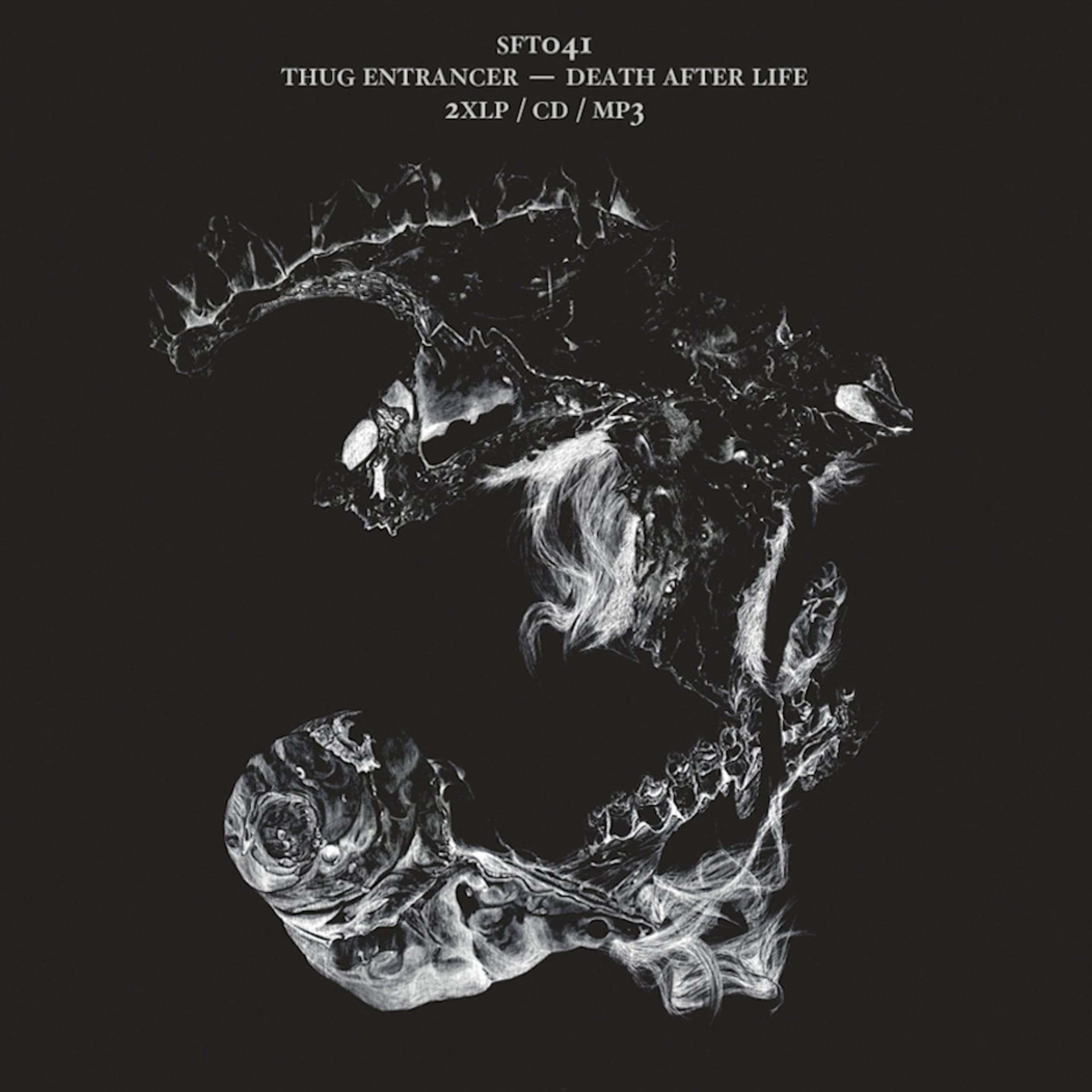
Review: Thug Entrancer – Death After Life
Denver DIY figurehead Ryan McRyhew deconstructs the dance music of Chicago with his latest project Thug Entrancer. Daniel Jones revels in the ruins.
Thug Entrancer makes me respect house music. Don’t send me any prayers or worried emails; it’s not a long-running interest. In fact, this record is closer in content to a sub-genre-style juke. There’s a ghostly processor void looming over Death After Life that gives the album an otherworldly URL sheen, as though it were transmissions from another plane of audio. Indeed, I’ve been petitioning for years for post-life artist awareness beyond wishing Kurt Cobain happy birthday on Twitter. Did you know that in 2014, ninety-eight percent of teenagers continue to listen to living artists? If you are part of the two percent that believe the opinions of the living are void and worthless and that only the dead should be allowed to speak and grace our ears with wisdom, share this review with ten friends or Klaus Nomi’s ghost will come into your room when you’re at work and ruin your bed sheets.
But back to my point about house music: Thug Entrancer, aka Ryan McRyhew, clearly has a love for the sounds of funky, paired-down Chicago. “III” in particular amps up the Larry Heard-like dance vibes, but removing the soul in favor of a kind of audio coleslaw: beats and snares are flung full-force at the listener’s ears, a sonic salad for the mind to digest. Thug Entrancer bears little aesthetic resemblance to McRyhew’s previous project Hideous Men, a collaboration with his partner Kristi Schaefer; the hip-hop tinged occultronic beats have been smoothed out into something more mechanical. I can’t say I’m particularly versed in Chicago’s musical flavors, having only been there once, but I can say that playing Whitehouse in the trap was not as cool as I’d hoped, unfortunately. The seasoned drug dealers were not having it, repeatedly referring to it as “demoralizing” and ‘’this shit’. If they’d only had “IV” to layer them in John Carpenter synths, they might have been too creeped out to slap me and whack my guts and make me stand on the corner with a sign that said “Fart Boss”. The Nancy Reagan advertisements were right: drug dealers are just bullies with cool tattoos and a lot of money.
Indeed, Death After Life maintains a driving, after-dark juke flavor across the first half of the record, reminiscent of footwork minimalism; the second starts to get a bit more upbeat, chasing Excitebike soundtracks down a neon-lit racetrack on such skittering tracks as “VIII” and making my legs do the awkward shuffle most frequently seen in “Old Man Dances To ——” sort of videos. McRyhew, however, does make you think. His disruption of the traditional patterns embedded in each of these genres by decades of musicians is a result of loving care. Even as he dismantles, he rebuilds sibling structures on top of the ruins which echo our modern thought processes toward our past: a constant renewal, a fresh perspective on our dance roots to re-inspire or re-awaken tired ears. In a similar way as That’s Harakiri, another recent musical reconceptualization from Sd Laika, McRyhew uses broken patterns and repetitious audio phrasing to hypnotize the listener with both familiarity and discombobulation: the hand clap beat of “V” applauding itself, the Atari meltdown toward the end of “III”, the overall uncanny feeling of hearing acid-tinged footwork rhythms overlayed with eighties Dario Argento-wave cloaks. It’s messy and, at times, seemingly divergent: the aforementioned meltdown, for example, seems more of an album closer than a three-deep ender. But that’s half the fun. Above all, Death After Life feels like the mutant art-kid split personality of modern house music’s more staid mannerisms. You can picture McRyhew bouncing around his equipment with a wide grin, running the likes of Carl Craig and RP Boo through neon dimension filters and sweating it out as diodes. A flick of the hair and that techsweat is pouring on to your face and lips, just flying everywhere as the synth pulses laser light on the wall reading: MUSIC IS COOL. Which is the best part about music. ~
Death After Life is out now via Software. This text appears in the forthcoming Electronic Beats Magazine N° 38 (2, 2014), out June 1st. You can purchase the new issue, and back issues, in the EB Shop.
Published May 15, 2014. Words by Daniel Jones.
